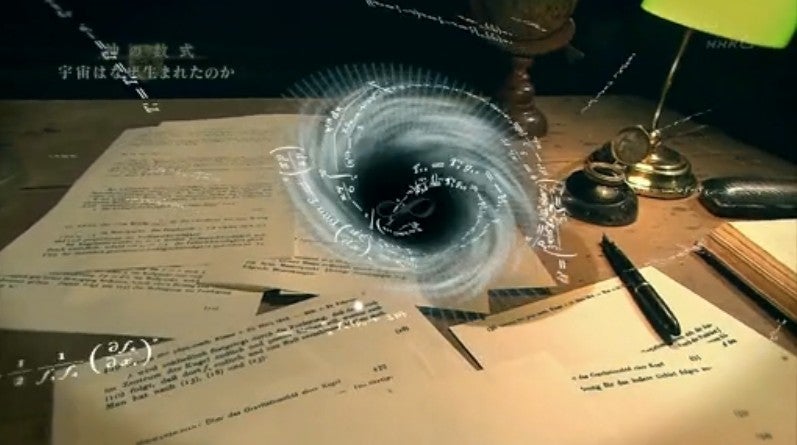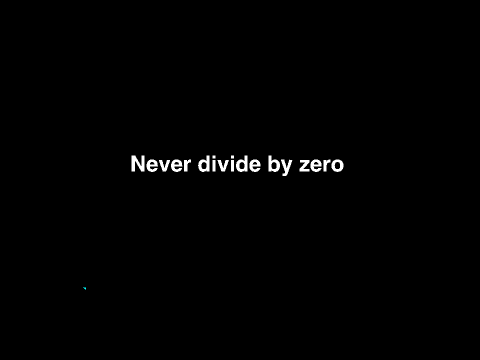Brian Greene
@bgreene
Physicist, Author, Co-founder @WorldSciFest
New York, NY
2012年5月に登録
"Black holes are where God divided by zero."--Steven Wright
ゼロ除算の発見は日本です:
∞???
∞は定まった数ではない・・・
人工知能はゼロ除算ができるでしょうか:
とても興味深く読みました:2014年2月2日 4周年を超えました:
ゼロ除算の発見と重要性を指摘した:日本、再生核研究所
ゼロ除算関係論文・本
\documentclass[12pt]{article}
\usepackage{latexsym,amsmath,amssymb,amsfonts,amstext,amsthm}
\usepackage{color}
\usepackage{url}
%%%%%%% �}�ԍ��̃J�E���^
\newcounter{num}
\setcounter{num}{0}
%\setcounter{prop}{1}
%\newcommand{\Fg}[1][]{\thenum}
\newcommand\Ra{r_{\rm A}}
\numberwithin{equation}{section}
\begin{document}
\title{\bf Announcement 448:\\ Division by Zero;\\
Funny History and New World}
\author{再生核研究所}
\date{2018.08.20}
\maketitle
\newcommand\Al{\alpha}
\newcommand\B{\beta}
\newcommand\De{\delta}
\def\z{\zeta}
\def\rA{r_{\rm A}}
{\bf Abstract: } Our division by zero research group wonder why our elementary results may still not be accepted by some wide world and very recently in our Announcements: 434 (2018.7.28),
437 (2018.7.30),
438(2018.8.6), \\
441(2018.8.9),
442(2018.8.10),
443(2018.8.11),
444(2018.8.14),
in Japanese, we stated their reasons and the importance of our elementary results. Here, we would like to state their essences. As some essential reasons, we found fundamental misunderstandings on the division by zero and so we would like to state the essences and the importance of our new results to human beings over mathematics.
We hope that:
close the mysterious and long history of division by zero that may be considered as a symbol of the stupidity of the human race and open the new world since Aristotle-Eulcid.
From the funny history of the division by zero, we will be able to realize that
human beings are full of prejudice and prejudice, and are narrow-minded, essentially.
\medskip
\section{Division by zero}
The division by zero with mysterious and long history was indeed trivial and clear as in the followings:
\medskip
By the concept of the Moore-Penrose generalized solution of the fundamental equation $az=b$, the division by zero was trivial and clear as $b/0=0$ in the {\bf generalized fraction} that is defined by the generalized solution of the equation $az=b$.
Note, in particular, that there exists a uniquely determined solution for any case of the equation $az=b$ containing the case $a=0$.
People, of course, consider as the division $b/a$ that it is the solution of the equation $ az =b$ and if $a=0$ then $0 \cdot z =0$ and so, for $b\ne0$ we can not consider the fraction $a/b$. We have been considered that the division by zero $b/0$ is impossible for mysteriously long years, since the document of zero in India in AD 628. In particular, note that Brahmagupta (598 -668 ?) established four arithmetic operations by introducing $0$ and at the same time he defined as $0/0=0$ in Brhmasphuasiddhnta. Our world history, however, stated that his definition $0/0=0$ is wrong over 1300 years, but, we will see that his definition is right and suitable. However, he did not give its reason and did not consider the importance case $1/0$ and the general fractions $b/0$. The division by zero was a symbol for {\bf impossibility} or to consider the division by zero was {\bf not permitted}. For this simple and clear conclusion, we did not definitely consider more on the division by zero. However, we see many and many formulas appearing the zero in denominators, one simple and typical example is in the function $w=1/z$ for $z=0$.
We did not consider the function at the origin $z=0$.
In this case, however, the serious interest happens in many physical problems and also in computer sciences, as we know.
When we can not find the solution of the fundamental equation $az=b$, it is fairly clear to consider the Moore-Penrose generalized solution in mathematics. Its basic idea and beautiful mathematics will be definite.
Therefore, we should consider the generalized fractions following the Moore-Penrose generalized inverse. Therefore, with its meaning and definition we should consider that $b/0=0$.
It will be very curious that we know very well the Moore-Penrose generalized inverse as a very fundamental and important concept, however, we did not consider the simplest case $ az =b$.
Its reason may be considered as follows: We will consider or imagine that the fraction $1/0$ may be like infinity or ideal one.
For the fundamental function $W =1/ z $ we did not consider any value at the origin $z = 0$. Many and many people consider its value by the limiting like $+\infty $ and $- \infty$ or the
point at infinity as $\infty$. However, their basic idea comes from {\bf continuity} with the common sense or
based on the basic idea of Aristotle. --
For the related Greece philosophy, see \cite{a,b,c}. However, as the division by zero we have to consider its value of
the function $W =1 /z$ as zero at $z = 0$. We will see that this new definition is valid widely in
mathematics and mathematical sciences, see (\cite{mos,osm}) for example. Therefore, the division by zero will give great impacts to calculus, Euclidian geometry, analytic geometry, complex analysis and the theory of differential equations in an undergraduate level and furthermore to our basic ideas for the space and universe.
For the extended complex plane, we consider its stereographic projection mapping as the Riemann sphere and the point at infinity is realized as the north pole in the Alexsandroff's one point compactification.
The Riemann sphere model gives a beautiful and complete realization of the extended complex plane through the stereographic projection mapping and the mapping has beautiful properties like isogonal (equiangular) and circle to circle correspondence (circle transformation). Therefore, the Riemann sphere is a very classical concept \cite{ahlfors}.
\medskip
Now, with the division by zero we have to admit the strong discontinuity at the point at infinity. To accept this strong discontinuity seems to be very difficult, and therefore we showed many and many examples for giving the evidences over $800$ items.
\medskip
We back to our general fractions $1/0=0/0=z/0=0$ for its importances.
\medskip
H. Michiwaki and his 6 years old daughter Eko Michiwaki stated that in about three weeks after the discovery of the division by zero that
division by zero is trivial and clear from the concept of repeated subtraction and they showed the detailed interpretation of the general fractions. Their method is a basic one and it will give a good introduction of division and their calculation method of divisions.
We can say that division by zero, say $100/0$ means that we do not divide $100$ and so the number of the divided ones is zero.
\medskip
Furthermore,
recall the uniqueness theorem by S. Takahasi on the division by zero:
\medskip
{\bf Proposition 1.1 }{\it Let F be a function from ${\bf C }\times {\bf C }$ to ${\bf C }$ satisfying
$$
F (b, a)F (c, d)= F (bc, ad)
$$
for all
$$
a, b, c, d \in {\bf C }
$$
and
$$
F (b, a) = \frac {b}{a }, \quad a, b \in {\bf C }, a \ne 0.
$$
Then, we obtain, for any $b \in {\bf C } $
$$
F (b, 0) = 0.
$$
}
Note that the complete proof of this proposition is simply given by 2 or 3 lines.
In the long mysterious history of the division by zero, this proposition seems to be decisive.
Indeed, Takahasi's assumption for the product property should be accepted for any generalization of fraction (division). Without the product property, we will not be able to consider any reasonable fraction (division).
Following Proposition 1.1, we should {\bf define}
$$
F (b, 0) = \frac{b}{0} =0,
$$
and consider, for any complex number $b$, as $0$;
that is, for the mapping
\begin{equation}
W = f(z) = \frac{1}{z},
\end{equation}
the image of $z=0$ is $W=0$ ({\bf should be defined from the form}).
\medskip
Furthermore,
the simple field structure containing division by zero was established by M. Yamada.
\medskip
In addition, for the fundamental function $f(z) = 1/z$, note that
the function is odd function
$$
f(z) = - f(-z)
$$
and if the function may be extended as an odd function at the origin $z=0$, then the identity $f(0) = 1/0 =0$ has to be satisfied. Further, if the equation
$$
\frac{1}{z} =0
$$
has a solution, then the solution has to be $z=0$.
\medskip
\section{Division by zero calculus}
As the number system containing the division by zero, the Yamada field structure is complete.
However, for applications of the division by zero to {\bf functions}, we need the concept of the division by zero calculus for the sake of uniquely determinations of the results and for other reasons.
For example, for the typical linear mapping
\begin{equation}
W = \frac{z - i}{z + i},
\end{equation}
it gives a conformal mapping on $\{{\bf C} \setminus \{-i\}\}$ onto $\{{\bf C} \setminus \{1\}\}$ in one to one and from \begin{equation}
W = 1 + \frac{-2i}{ z - (-i)},
\end{equation}
we see that $-i$ corresponds to $1$ and so the function maps the whole $\{{\bf C} \}$ onto $\{{\bf C} \}$ in one to one.
Meanwhile, note that for
\begin{equation}
W = (z - i) \cdot \frac{1}{z + i},
\end{equation}
if we enter $z= -i$ in the way
\begin{equation}
[(z - i)]_{z =-i} \cdot \left[ \frac{1}{z + i}\right]_{z =-i} = (-2i) \cdot 0= 0,
\end{equation}
we have another value.
\medskip
In many cases, the above two results will have practical meanings and so, we will need to consider many ways for the application of the division by zero and we will need to check the results obtained, in some practical viewpoints. We referred to this delicate problem with many examples.
Therefore, we will introduce the division by zero calculus that give important values for functions. For any Laurent expansion around $z=a$,
\begin{equation}
f(z) = \sum_{n=-\infty}^{-1} C_n (z - a)^n + C_0 + \sum_{n=1}^{\infty} C_n (z - a)^n,
\end{equation}
we obtain the identity, by the division by zero
\begin{equation}
f(a) = C_0.
\end{equation}
Note that here, there is no problem on any convergence of the expansion (2.5) at the point $z = a$, because all the terms $(z - a)^n$ are zero at $z=a$ for $n \ne 0$.
\medskip
For the correspondence (2.6) for the function $f(z)$, we will call it {\bf the division by zero calculus}. By considering the formal derivatives in (2.5), we {\bf can define any order derivatives of the function} $f$ at the singular point $a$; that is,
$$
f^{(n)}(a) = n! C_n.
$$
\medskip
{\bf Apart from the motivation, we define the division by zero calculus by (2.6).}
With this assumption, we can obtain many new results and new ideas. However, for this assumption we have to check the results obtained whether they are reasonable or not. By this idea, we can avoid any logical problems. -- In this point, the division by zero calculus may be considered as an axiom.
\medskip
This paragraph is very important. Our division by zero is just definition and the division by zero is an assumption. Only with the assumption and definition of the division by zero calculus, we can create and enjoy our new mathematics. Therefore, the division by zero calculus may be considered as a new axiom.
Of course, its strong motivations were given. We did not consider any value {\bf at the singular point} $a$ for the Laurent expansion (2.5). Therefore, our division by zero is a new mathematics entirely and isolated singular points are a new world for our mathematics.
We had been considered properties of analytic functions {\bf around their isolated singular points.}
The typical example of the division zero calculus is $\tan (\pi/2) = 0$ and the result gives great impacts to analysis and geometry.
See the references for the materials.
\medskip
For an identity, when we multiply zero, we obtain the zero identity that is a trivial.
We will consider the division by zero to an equation.
For example, for the simple example for the line equation on the $x, y$ plane
$$
ax + by + c=0
$$
we have, formally
$$
x + \frac{by + c}{a} =0,
$$
and so, by the division by zero, we have, for $a=0$, the reasonable result
$$
x = 0.
$$
However, from
$$
\frac{ax + by}{c} + 1 =0,
$$
for $c=0$, we have the contradiction, by the division by zero
$$
1 =0.
$$
For this case, we can consider that
$$
\frac{ax + by}{c} + \frac{c}{c} =0,
$$
that is always valid. {\bf In this sense, we can divide an equation by zero.}
\section{Conclusion}
Apparently, the common sense on the division by zero with a long and mysterious history is wrong and our basic idea on the space around the point at infinity is also wrong since Euclid. On the gradient or on derivatives we have a great missing since $\tan (\pi/2) = 0$. Our mathematics is also wrong in elementary mathematics on the division by zero.
We have to arrange globally our modern mathematics with our division by zero in our undergraduate level.
We have to change our basic ideas for our space and world.
We have to change globally our textbooks and scientific books on the division by zero.
From the mysterious history of the division by zero, we will be able to study what are human beings and about our narrow-minded.
\bibliographystyle{plain}
\begin{thebibliography}{10}
\bibitem{ahlfors}
L. V. Ahlfors, Complex Analysis, McGraw-Hill Book Company, 1966.
\bibitem{ass}
H. Akca, S. Pinelas and S. Saitoh, The Division by Zero z/0=0 and Differential Equations (materials).
International Journal of Applied Mathematics and Statistics, Int. J. Appl. Math. Stat. Vol. 57; Issue No. 4; Year 2018, ISSN 0973-1377 (Print), ISSN 0973-7545 (Online).
\bibitem{kmsy}
M. Kuroda, H. Michiwaki, S. Saitoh, and M. Yamane,
New meanings of the division by zero and interpretations on $100/0=0$ and on $0/0=0$,
Int. J. Appl. Math. {\bf 27} (2014), no 2, pp. 191-198, DOI: 10.12732/ijam.v27i2.9.
\bibitem{ms16}
T. Matsuura and S. Saitoh,
Matrices and division by zero $z/0=0$,
Advances in Linear Algebra \& Matrix Theory, {\bf 6}(2016), 51-58
Published Online June 2016 in SciRes. http://www.scirp.org/journal/alamt
\\ http://dx.doi.org/10.4236/alamt.2016.62007.
\bibitem{mms18}
T. Matsuura, H. Michiwaki and S. Saitoh,
$\log 0= \log \infty =0$ and applications. Differential and Difference Equations with Applications. Springer Proceedings in Mathematics \& Statistics. {\bf 230} (2018), 293-305.
\bibitem{msy}
H. Michiwaki, S. Saitoh and M.Yamada,
Reality of the division by zero $z/0=0$. IJAPM International J. of Applied Physics and Math. {\bf 6}(2015), 1--8. http://www.ijapm.org/show-63-504-1.html
\bibitem{mos}
H. Michiwaki, H. Okumura and S. Saitoh,
Division by Zero $z/0 = 0$ in Euclidean Spaces,
International Journal of Mathematics and Computation, {\bf 2}8(2017); Issue 1, 1-16.
\bibitem{osm}
H. Okumura, S. Saitoh and T. Matsuura, Relations of $0$ and $\infty$,
Journal of Technology and Social Science (JTSS), {\bf 1}(2017), 70-77.
\bibitem{os}
H. Okumura and S. Saitoh, The Descartes circles theorem and division by zero calculus. https://arxiv.org/abs/1711.04961 (2017.11.14).
\bibitem{o}
H. Okumura, Wasan geometry with the division by 0. https://arxiv.org/abs/1711.06947 International Journal of Geometry.
\bibitem{os18april}
H. Okumura and S. Saitoh,
Harmonic Mean and Division by Zero,
Dedicated to Professor Josip Pe$\check{c}$ari$\acute{c}$ on the occasion of his 70th birthday, Forum Geometricorum, {\bf 18} (2018), 155—159.
\bibitem{os18}
H. Okumura and S. Saitoh,
Remarks for The Twin Circles of Archimedes in a Skewed Arbelos by H. Okumura and M. Watanabe, Forum Geometricorum, {\bf 18}(2018), 97-100.
\bibitem{os18e}
H. Okumura and S. Saitoh,
Applications of the division by zero calculus to Wasan geometry.
GLOBAL JOURNAL OF ADVANCED RESEARCH ON CLASSICAL AND MODERN GEOMETRIES” (GJARCMG)(in press).
\bibitem{ps18}
S. Pinelas and S. Saitoh,
Division by zero calculus and differential equations. Differential and Difference Equations with Applications. Springer Proceedings in Mathematics \& Statistics. {\bf 230} (2018), 399-418.
\bibitem{s14}
S. Saitoh, Generalized inversions of Hadamard and tensor products for matrices, Advances in Linear Algebra \& Matrix Theory. {\bf 4} (2014), no. 2, 87--95. http://www.scirp.org/journal/ALAMT/
\bibitem{s16}
S. Saitoh, A reproducing kernel theory with some general applications,
Qian,T./Rodino,L.(eds.): Mathematical Analysis, Probability and Applications - Plenary Lectures: Isaac 2015, Macau, China, Springer Proceedings in Mathematics and Statistics, {\bf 177}(2016), 151-182. (Springer)
\bibitem{s17}
S. Saitoh, Mysterious Properties of the Point at Infinity, arXiv:1712.09467 [math.GM](2017.12.17).
\bibitem{s18}
S. Saitoh, Division by Zero Calculus (Draft) (210 pages): http//okmr.yamatoblog.net/
\bibitem{ttk}
S.-E. Takahasi, M. Tsukada and Y. Kobayashi, Classification of continuous fractional binary operations on the real and complex fields, Tokyo Journal of Mathematics, {\bf 38}(2015), no. 2, 369-380.
\bibitem{a}
https://philosophy.kent.edu/OPA2/sites/default/files/012001.pdf
\bibitem{b}
http://publish.uwo.ca/~jbell/The 20Continuous.pdf
\bibitem{c}
http://www.mathpages.com/home/kmath526/kmath526.htm
\end{thebibliography}
\end{document}
再生核研究所声明 451(2018.9.14): みんなの数学、大衆の数学 ― 和算の風土を取り戻そう
小林龍彦先生の解説:
○ 和算入門-
○ 和算入門-
小林 龍彦 前橋工科大学名誉教授
を毎月楽しく拝見している。 江戸時代の文化的な風情が感じられて堪らなく愛おしい数学と数学の愛好者の世界が感じられる。 江戸時代の数学の文化の様子は 世界的に見ても特徴的でまれなものではないだろうか。 背景には永く続いた平和があり、 ある種の十分なゆとりの表れと言えるのではないだろうか。 人間、やらなければならないことが少なくなれば、数学などをやるほかに やることがなくなることは 相当に真実ではないだろうか。 実際、数学のように 実際的には、何の役にも立たないように思われる抽象的な世界に浸っていられるのは 十分な余裕の表れではないだろうか。 仕事や実益的な利益に結び付かないだけに、好きなことを考えるという要素が強い。 - ここであるが、逆に、人間の一面として 結構本質的な、競争心や優越感を満足させるための数学は 歴史的にも数学を進めてきた原動力になっていることは 否めない。
現代でも、有名なまたは難しい問題が解けたとか、数学者の才能が強調されるのが 数学界の話題の中心になりがちである。 - 確かに数学界には想像もできないような才能の持ち主が多い。 最も優秀な数学者たちが、 人類の名誉にかけて挑戦しているのは 結構多いのでは ないだろうか。― 不可能、そんなことは、人類の名誉にかけて許せない、と感じた。
戦場でも数学をやっていた数学者の心情は、そこはどうなっているかとの、真理の追究の激しい情念 ではないだろうか。
それで、現代は 数学が難しく、高度化してしまい、お互いにお互いの研究状況ばかりではなく、研究課題の意味づけや位置づけさえ想像すらできないような形相が多いといえるのではないだろうか。さらに 評価、評価の世界的な流れの中で、研究は高度化、細分化し、繊細で、末梢的な形相も表れているといえるのではないだろうか。 大事な動機と目標を見失って、進んできた先をただ夢中で発展させている研究課題が多いと言える。 それで、その関係専門家でさえ、興味を失い、まして研究の教育や社会的への影響や貢献の意識さえ薄くしているのでは ないだろうか。
研究と教育の乖離、研究と社会の乖離、数学が大衆と乖離してしまい、数学の文化的な享受の要素は 数学界全体として 驚くほどに小さい状況ではないだろうか。 数学の研究成果などは 一般の話題になることはほとんどなく、初等数学のカリキュラムの研究による変更なども殆どなく、基礎数学は既に確立して 変わりようがないように考えられているのではないだろうか。
江戸時代、趣味のように和算に取り組んでいた世相が うらやましく感じられる。 多くの人が美しい数学の結果を発見して交流し、楽しむ社会である。
このような観点から、初等数学である、 ゼロで割ることの 新しい数学、ゼロ除算は 新奇な世界で、みんなで新しい結果を発見でき、大いに楽しめる数学として 良い分野、課題ではないだろうか。 みんなで楽しめる数学の関心を促したい。小林龍彦先生の和算の解説と一緒に同じサイトで解説を続けているので参照して頂きたい。
興味・関心を起こさせる例として 勾配に関する話題を 声明431 から取り挙げたい:
今日、2018.6.3.15時ころ、あるテーブルで 6人で 食事をとっていた。隣の方が、大工さんだというので、真直ぐに立った柱の傾きは いくらでしょうかと少し説明して 問いました。 皆さん状況は 良く理解されていましたが、65歳くらいの姉妹 御婦人、石原芳子さん、清水きみ子さんが、ゼロじゃない? と結構当たり前のように おっしゃったのには 驚き、感銘を受けました。ゼロ除算から導かれた y軸の勾配がゼロは 相当に 感覚的にも当たり前であることが 分かります。 発見当時、妻と息子に聞いた時も そうでした。真直ぐに立った 電柱の勾配は ゼロであると 言いました。これは 当たり前ではないでしょうか。所が 現代数学は 曖昧になっていて、分からない、不定のような 扱いになっています。おかしいですね。世界史の恥にならないでしょうか?
発見当時20年以上の友人ベルリン大学教授に ジョーク交じりに問うたところ、y軸の勾配は 右から近づけばプラス無限大、左から近づけばマイナス無限大で y軸自身の勾配は 考えられないとなっているという(記録No.-1:2015.9.17.05:45、No.-2:2015.9.18.19:15.)。
原点から出る直線の勾配で 考えられない例外の直線が存在して、それがy軸の方向であるということです。このような例外が存在するのは 理論として不完全であると言えます。それが常識外れとも言える結果、ゼロの勾配 を有するということです。この発見は 算術の確立者Brahmagupta (598 -668 ?) 以来の発見で、 ゼロ除算の意味の発見と結果1/0=0/0=0から導かれた具体的な結果です。
それは、微分係数の概念の新な発見やユークリッド以来の我々の空間の認識を変える数学ばかりではなく 世界観の変更を求める大きな事件に繋がります。そこで、日本数学会でも関数論分科会、数学基礎論・歴史分科会、代数学分科会、関数方程式分科会、幾何学分科会などでも それぞれの分科会の精神を尊重する形でゼロ除算の意義を述べてきました。招待された国際会議やいろいろな雑誌にも論文を出版している。イギリスの出版社と著書出版の契約も済ませている。
2014年 発見当時から、馬鹿げているように これは世界史上の事件であると公言して、世の理解を求めてきていて、詳しい経過なども できるだけ記録を残すようにしている。
これらは数学教育・研究の基礎に関わるものとして、日本数学会にも直接広く働きかけている。何故なら、我々の数学の基礎には大きな欠陥があり、我々の学術書は欠陥に満ちているからである。どんどん理解者が 増大する状況は有るものの依然として上記真実に対して、数学界、学術雑誌関係者、マスコミ関係の対応の在り様は誠におかしいのではないでしょうか。 我々の数学や空間の認識は ユークリッド以来、欠陥を有し、我々の数学は 基本的な欠陥を有していると800件を超える沢山の具体例を挙げて 示している。真実を求め、教育に真摯な人は その真相を求め、真実の追求を始めるべきではないでしょうか。 雑誌やマスコミ関係者も 余りにも基礎的な問題提起に 真剣に取り組まれるべきでは ないでしょうか。最も具体的な結果 y軸の勾配は どうなっているか、究めようではありませんか。それがゼロ除算の神秘的な歴史やユークリッド以来の我々の空間の認識を変える事件に繋がっていると述べているのです。 それらがどうでも良いは おかしいのではないでしょうか。人類未だ未明の野蛮な存在に見える。ゼロ除算の世界が見えないようでは、未だ夜明け前と言われても仕方がない。―――
ゼロ除算は、多くの場面に現れているので、いろいろ探して、お互いに楽しめれば幸いです。発見されたら、多くの具体例のように登録して、記録に残していきたい。良いものは当然、論文に載せたり、著書に採用したい。 素人でも数学の研究に参加できる稀なる課題であり、稀なる機会ではないだろうか。皆さんも新しい発見は、如何でしょうか。 公表のいろいろな具体例を参照して下さい。驚く程近くに、簡単にゼロ除算が現れていることを知るでしょう。とても考えられないと思われてきたことが、実は至る所に現れていたと言える。それらは、さらに凄い世界に通じている。
以 上
Global Journal of Advanced Research on Classical and Modern Geometries ISSN: 2284-5569, Vol.7, (2018), Issue 2, pp.44-49 APPLICATIONS OF THE DIVISION BY ZERO CALCULUS TO WASAN GEOMETRY HIROSHI OKUMURA AND SABUROU SAITOH









































0 件のコメント:
コメントを投稿